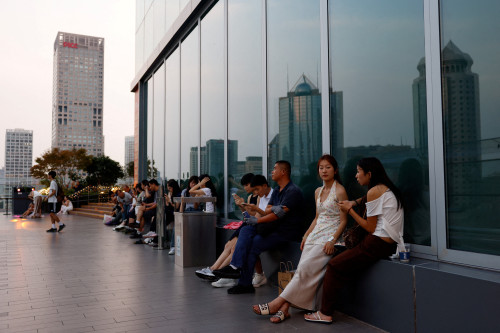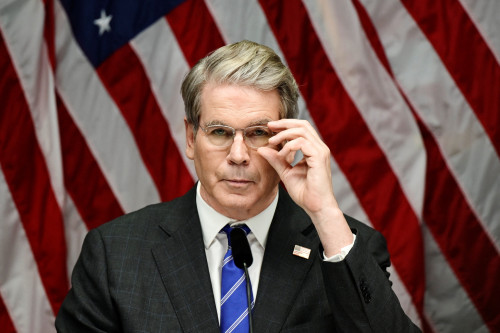By Tom Balmforth
(Reuters) – The Ukrainian president’s performance at a NATO summit this week was vintage Volodymyr Zelenskiy: go in hard, push allies beyond their comfort zone, and go home with less than you said you wanted, but more than seemed likely only a few months ago.
Zelenskiy left Western leaders in Vilnius with little choice but to publicly snub his demand to set a clear path for Ukraine to join the U.S.-led military alliance.
But the summit’s assurances of unwavering support, new pledges of military aid and a framework for security guarantees against Russia showed how far Ukraine has already moved towards the Euro-Atlantic camp during the war.
Zelenskiy sounded angry and confrontational at the start of the two-day event on Tuesday, saying it would be “absurd” if Kyiv did not get a timetable to join NATO.
NATO members were forced to spell it out: Ukraine can’t join the alliance, with its all-for-one, one-for-all security pledge, as long as it is at war with Russia. That would mean the alliance itself would be at war, and leaders won’t go that far. There were still “conditions” to meet, though no one would say precisely what they were.
But by the end, after one-on-one meetings with U.S. President Joe Biden and other NATO leaders, Zelenskiy had softened his tone, describing the outcome as “good”, though not “ideal”.
“It is very important: for the first time since independence, we have formed a security foundation for Ukraine on its way to NATO,” Zelenskiy said, adding there had also been “a good reinforcement with weapons.”
The summit did not provide the invitation he had sought, but it scrapped the need for Kyiv to complete a preparatory Membership Action Plan, held a meeting of an inaugural NATO-Ukraine Council to manage the relationship and reaffirmed that “Ukraine’s future is in NATO”.
“Ukraine is now very clearly in the Euro-Atlantic camp … To me, Ukraine emerges from this summit in a much stronger place than it was even a week ago,” said Neil Melvin, an analyst at London-based Royal United Services Institute.
On the summit’s sidelines, Group of Seven countries unveiled an international framework to boost Ukraine’s long-term security against Russia. A slew of other military packages were announced at bilateral meetings between Zelenskiy and NATO leaders.
Biden said: “When Putin and his craven lust for land and power unleashed his brutal war on Ukraine, he was betting NATO would break apart…. He thought our unity would shatter at the first testing. He thought democratic leaders would be weak. But he thought wrong.”
Vital Western military aid has included battle tanks, fighting vehicles and vast amounts of ammunition during the war. Before Russia invaded in February 2022, even the idea of supplying lethal aid to Kyiv was controversial for many powers.
Melvin said the West’s “massive security assistance” would accelerate with the G7 framework and that Ukraine was no longer in the “grey” zone between NATO and Moscow as it had been before Russian troops invaded.
“It’s being pulled into the Euro-Atlantic community by a whole tangle of sets of relationships,” he said.
GRUDGING ACCEPTANCE
Even as Zelenskiy requested fast-track membership last September and lobbied for an invitation to begin the process of joining, he acknowledged that would be impossible as the war with Russia raged. On Wednesday there were signs of grudging acceptance from the Ukrainians that the deal was as good as they could have expected.
Presidential adviser Mykhailo Podolyak, in an interview with Reuters in Kyiv, said he viewed the summit’s outcome “optimistically”.
“This is first long-term support of Ukraine from the military point of view. These are assistance packages not only today but in the future years,” he said.
Western officials said Zelenskiy – his trademark military khaki contrasting with the formal business attire of Western leaders – appeared more relaxed on Wednesday. They put down his previous day’s angry outburst as an eleventh-hour bid to ratchet up the pressure on NATO officials who were still hashing out the summit’s mammoth communique.
The final outcome papered over divisions between Eastern European nations, who had wanted to start the process for bringing Ukraine into NATO with the aim of getting Kyiv in as soon as possible after the war, and a more cautious camp led by the United States and Germany.
Ukrainian officials made clear: they will not stop pushing until they have won a security guarantee from the West sufficient to deter Moscow from any future attacks.
Deputy Prime Minister Olha Stefanishyna said Ukraine had come a long way since the 2008 Bucharest summit, when NATO told Kyiv it could one day join, while offering no plan for it to do so. But ambiguity over Ukraine’s future still leaves it vulnerable, she said.
“Unfortunately, (the Vilnius) summit has not ended the era of uncertainty, which has decisive significance for our general security… we can obtain more. We must obtain more,” she said.
Andriy Zagorodnyuk, Ukraine’s defence minister from 2019-2020, told Reuters Ukraine had not really expected membership or even a timeline for it, but that it had hoped to receive something that would “pave a roadmap” to membership.
“But there wasn’t (that). Basically, it was something like: Ukraine should (fulfil) some conditions. Which conditions was completely unclear. When, what? Basically nothing, really,” he said by telephone.
Nonetheless, the summit had been hugely positive for Ukraine, he said, citing the announcements on its sidelines, the unwavering support outlined in the communique and the affirmation that the bloc sees Kyiv as a member one day.
The announcements of more weapons would bolster the morale of Ukrainian troops, he said.
“I don’t think people expected too much from NATO that there would be a breakthrough. It’s too strategic a question.”
(Reporting by Tom Balmforth; additional reporting by Sabine Siebold and Andrew Gray in Vilnius, and by Anna Dabrowska in Kyiv; editing by)





